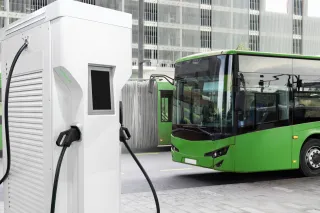The role of drones is growing rapidly in various industries, including inspection, surveillance and time-critical transport. Fast, long-flying and cost-effective drones can cope with challenging environments. Technological developments and active research open up new avenues for them.
Automatic drones are rapidly becoming part of transport systems in various industries. They have great potential, for example, in construction and aerial surveillance or as part of industry site security solutions. Drones also play an increasing role in critical deliveries, such as the transport of blood and laboratory samples and even that of organs.
- These solutions are utilised, for example, in Ghana and Rwanda, where road infrastructure is deficient. There, drones can facilitate transportation to remote areas. For example, coronary vaccines have been delivered in packages dropped by parachutes. Even in Finland, medicine and defibrillator transports have been tried. Urgently needed spare parts are an example of activities carried outside medicine, says Hannu Karvonen, Senior Scientist at VTT.
Roadmap creating a vision for 2026
VTT carries out a great deal of research and development work related to drones and their systems. The scale is extensive: research topics include autonomous drone operations, airspace control solutions, drones flying in flocks, and drones that can be used to fly for reasonably long distances with low emissions.
The future of drones is outlined at VTT using the impact roadmap for 2022-2026. In 2022, the focus will be on traffic management of the unmanned drones.
- Typically, drones fly at altitudes below 120 meters in the airspace, which may also be used by, for example, medical helicopters and the Finnish Border Guard. In order to ensure safety, drones must be able to notify other airspace users of their existence and, possibly, also evade them, says Karvonen.
In 2023, drones flying out of visual range (BVLoS, Beyond Visual Line-of-Sight) will be topical. This requires both proven security solutions, secure telecommunications and video connections. Test areas for testing such flights have already been established in Finland. BVLoS flights are expected to become part of the transport system for critical logistics, security and control environments in around 2024.
In 2025, the trend is already moving towards vertiports, i.e., aerodromes for vertically rising and descending drones. In 2026, it will be possible to try eVTOL flight taxis, which will provide opportunities for rapid transport of medical or rescue personnel, for example.
- The realization of this vision requires both the development of technology and resolution of regulatory issues. Public opinion also plays an important role, says Karvonen.
Swarm flying seeks inspiration in nature
Flight management and swarm flying are particularly interesting and topical topics in drone research
- The solutions seek inspiration in biology and nature. There are many different types of flocks in the animal community, whose division of tasks and swarm behaviour can also be applied to drone flights, says Karvonen.
Swarm flying can be used, for example, in rescue and defence missions focusing on large areas. Collective artificial intelligence enables independent coordination of a drone swarm and their division of labour in complex tasks. This helps maximise the benefits of the swarm while minimising the amount of human work required for the management of the swarm.
With the help of a swarm simulator developed by VTT, it is possible to study, for example, the autonomous division of tasks of a drone swarm.

This subject is being studied, for example, in the FireMan project funded by the Academy of Finland, which uses drones to prevent, identify and control forest fires.
- With climate change, forest fires are increasingly a global problem. Drones could be used more widely to identify the risks of forest fires, to collect situational data, to identify the progress of fire fronts, and to help extinguish them. This is what we are developing together with various rescue authorities, Karvonen says.
The impact of Arctic conditions is studied in an icing wind tunnel
In Finland, the Arctic conditions and the activities of drones in different seasons require special attention. VTT is studying the operation of drones in an icing wind tunnel, the conditions of which can be controlled.
- We test how drone components freeze under different conditions and whether this can be influenced, for example, by using aerodynamic or anti-icing solutions. In this way, it is possible to examine how ice affects a drone's ability to fly. The goal is to ensure the drones are operational regardless of the weather.
Freezing of a drone rotor blade in VTT's icing wind tunnel.

Effectiveness with large projects
Finland is one of the world's leading countries in drone research and promotes the development of drones in several national and international joint projects. VTT is closely involved in this cooperation.
For example, the FUAVE project (Finnish UAV Ecosystem), funded by the Academy of Finland, is a drone ecosystem involving 73 actors from across Finland related to the development of drones. The network has at its disposal test areas for the development of drones in different areas of Finland. Another example is the Drolo project, funded by Business Finland. This is a joint project focusing on airspace management, involving a large number of industry representatives.
AiRMOUR, on the other hand, is a major EU project under which the use of drones is examined in emergencies such as in the transport of people and heavy loads, including medical equipment.
- In the summer of 2023, a major demonstration will be arranged in Helsinki. We can then see a futuristic example of a drone capable of transporting passengers in Helsinki, Karvonen says.

- Autonomous operation of drones
- Swarm flying
- Airspace management
- Drone operation in arctic conditions
- Detection of oil and chemical leaks
- Air taxis for emergency situations
- Building inspections with drones
- Concept of Operations development
- User interfaces for command and control of drones
- Augmented reality-based visualisations and control
- Energy systems’ maintenance, such as monitoring and inspections
- Drone route planning, communications and remote control





